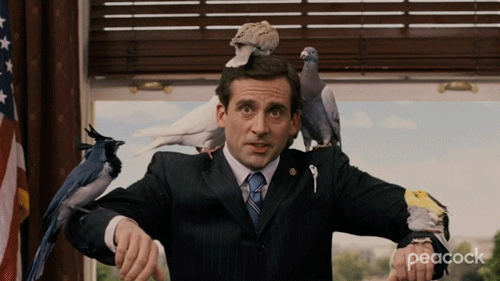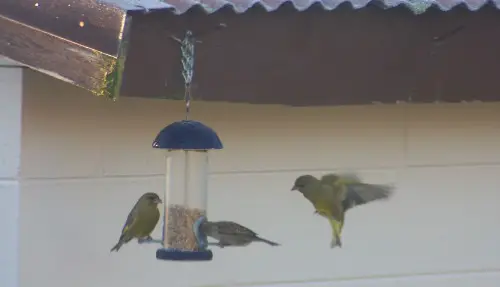Typically, people would buy a feeder first then figure out how to set it up later. Although this may work, it compromises your time and effort.
Don’t worry, because we’ve got you covered!
In this article, we’ll try to answer all your concerns and questions about how to build a bird feeding station as well as the different species of bird.
If you want to learn more than just how to set up a bird feeder, keep scrolling and take a moment to read.
A Step-By-Step Guide For The Perfect Bird Feeder Setup
Doing the step-by-step procedure is fundamental when saving both time and money. Take a moment to think of the different factors below. Presented are the different steps that may guide you to set up your desired bird feeder station:
- Select the location of your bird feeder
- Choose the species of bird you want to attract
- Determine the ideal food to attract the kind of birds you want
- Identify the mounting method for your bird feeder
- Settle and purchase feeder
- Add water or set up near a water source
1. Select The Location Of Your Bird Feeder
Although it can be attached almost anywhere, some locations work better than others.
Examples of this are trees, fences, windows, poles, or on the ground or tree stumps.
If you want it to install it decoratively, position it in an area that is also decorated as well. This will add to the aesthetics and attract more birds.
Things such as trees, large bushes, and fences are some features to consider in choosing a good location. Setting it up in a garage or shed will be a good idea as well as in the middle of your lawn. Try researching where to place a bird feeder to give yourself a headstart in attracting birds to your backyard.
2. Choose The Species Of Bird You Want To Attract
Knowing the different backyard birds such as House Finch, Mourning Dove, and Northern Cardinal may help you determine the kind of feeder and bird food you want to offer, like seed and suet such as hummingbirds with hummingbird feeder filled with suet.
However, the species of bird is up to you to decide.
By getting the right bird food, you may attract multiple species of birds such as sparrows, buntings, finches, chickadees, nuthatches, jays, blackbirds, bluebirds, pigeons, and many more.

3. Determine The Ideal Food To Attract The Kind Of Birds You Want
After determining how to attract birds to a birdfeeder, the next step is to offer them food that suits their tastes or favorites. Although it may consume more of your time researching their liked bird food, it is worth it when you see a bird enjoy its food.
Just like us, birds have their favorite snacks. A single type of seed can attract multiple species simultaneously; some may also prefer fruits, nectar, nuts, suet, and even bugs.
Most backyard bird feeding stations use seed mixes to attract multiple birds at once, but there are a few disadvantages concerning price and quality.
Purchasing cheap birdseed may not be the best thing to do. Half of this mixture contains milo, which only doves and quails enjoy; it is often used as a filler.
These cheap birdseed mixtures are similar to goulash; they are a mash-up of several meals that birds enjoy. However, in a mix, birds tend to be picky eaters. They’ll pick out their favorites and either leave the remainder on the feeder or toss them to the ground.
You could pay twice as much for a quality mix and attract much more birds without having to throw away half of it. For better choices, talk to your avian organization to find out where the best place to buy bird seed. You'll have more options available on the types of bird seed to purchase especially if you are on a tight budget!
Recommended Bird Food
Most people like to put cheap bird food in their bird feeders. However, a seed or two, bugs, suet, nectar, and fruit are cheap things you can offer to a bird. Avoid putting bread or table scraps as it attracts more aggressive birds or other animals for bird feeding.
If we’ll choose one, the black oil sunflower seed can attract a variety of bird species. But, the more bird food, the better.
To attract various backyard birds, setting up multiple bird feeders filled with different bird food like suet which is recommended for winter bird feeding, is ideal such as window feeders and tube feeders.
Smaller birds are attracted to window feeders. Small bushes or trees help in attracting birds to your window feeder for bird feeding.
4. Identify The Best Mounting Method For Your Bird Feeder
After choosing the area where to place a bird feeder stand and mounting them, for instance, it’ll give you the idea of how you want to mount the bird feeder. There are multiple ways of installing feeders, a few ideal ways are presented below:
Bird Feeder Pole
A feeder pole mostly has an auger to screw to the ground for stability.
Feeder poles are very customizable and easy to decorate; you can even add a baffle to prevent squirrels from accessing your feeder.
Shepherd Hooks
The loops or S-shaped hooks on most bird feeders allow you to hang the feeder from a hook or arm. This is how tube feeders and smaller hopper feeders are usually mounted. Lightweight feeders are hung from a shepherd's hook that has been driven into the ground.
After that, you can place them anywhere in your yard for bird feeding. This allows for easy installation and lets you remove the feeder whenever you want without hassle.
5. Choose And Purchase A Feeder
Considering the best types of bird feeders and sizes is the first step when looking for one. You have to consider the feeder that fits the criteria you’re looking for, which is why every feeder has its purpose. Presented below are the two common types of bird feeders:
Platform Bird Feeder
This is the most basic kind of bird feeder.
It's just a plain tray with seeds and other bird food strewn on it. Most designs are open like a tray while some have tiny roofs that make them look like birdhouses to protect the feeder from rain and sunlight.
These feeders can be placed on the ground or elevated over a pole or a pedestal.
Food can get moist and go rotten because it is exposed to the weather and easily accessible. Pests, predators, and other animals have open access to these feeders, which is a huge disadvantage.
Tube Bird Feeder
This feeder keeps the seed safe in a transparent vertical tube that is both waterproof and tough against UV rays. Some models have accessories installed like porches and additional feeding ports.
Most designs are made of plastic while others make use of metal mesh. These are strung higher and usually only have a ton of seed in them.
The plastic tube feeders of this type specialize in protecting bird food from various elements so it doesn’t lose its quality quickly.
6. Add Water Or Set Up Near A Water Source
Every bird needs a fresh and clean source of water for survival. In fact, they love water, it allows them to drink, splash, wash, and maintain their plumage.
Water also draws a lot of birds. All birds, not just feeder birds, are drawn to water. One of the most significant additions to your bird feeding station is a birdbath. Birdbaths are a practical way to keep birds hydrated.
Birds use practically any sort of bird bath since water is vital to their survival.
You might believe that birds require water in the summer when natural supplies are limited. You may be correct, but let us not forget that in the winter, birds need just to be as hydrated as they can get as well.
During periods of extreme cold, birds may require a lot of water to stay hydrated. If you live in an area where temperatures often drop below freezing, a heated birdbath can be a good idea.
Always make sure to clean your birdbaths regularly to prevent it from becoming a breeding ground for viruses, germs, and even mosquitoes.
Placing Bird Baths
A bird bath might serve as the focal point of your bird feeding station. It can also be used as a decorative yard feature among flowers or other landscaping, positioned apart from other bird feeders.
Bathing birds are prone to become distracted when engaged in their wet hobbies. As a result, having a nearby bush to fly into can help them avoid predators.
Cats, on the other hand, can hide in a hedge with foliage that goes all the way to the ground and pounces. As a result, maintain birdbaths at least 10 feet away from any bushes where cats could hide.
Placing a bird bath in the shade of a tree or building will keep the water colder and more pleasant for the backyard birds. It may help prevent algae from growing as quickly as if the birdbath were left out in the open.
Birds bathe in puddles on the ground as a natural occurrence. As a result, they're used to finding and using water that's close to the ground.
Putting a birdbath on a pedestal about 3 feet off the ground may help to limit usage. In a taller birdbath, however, birds may be safer from predators. A second water source would also be a great idea.
Frequently Asked Questions
What is the best birdseed?
Sunflower seeds tend to attract a wide variety of bird species. It can be placed on the feeder or the ground.
What should I avoid putting in a feeder?
Any desired food of the bird can be put in the feeder. However, hummingbird feeders should only be filled with sucrose, refined white sugar.
No brown sugar, raw sugar, food coloring, and honey should be included in the feeder.
What time of day do birds feed?
Birds usually eat in the morning. Therefore, you should fill the feeder with food at dawn or early morning.
Conclusion
You have now gained different knowledge on not just how to build a bird feeding station, but also the best ways to attract birds and as well as what to feed them.
Never forget to maintain your bird feeder station, birdbath, and bird food from time to time; we don’t want some human transmittable bird disease, do we?
We hope you enjoyed our company and may you find joy as you do birdwatching. Happy birding!

